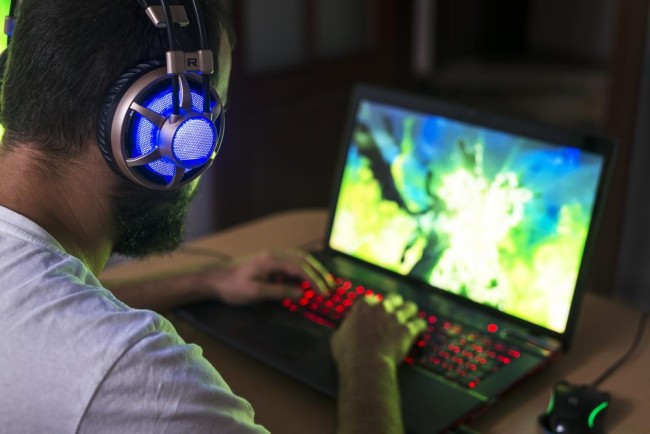A slow laptop is one of those little annoyances that can have an outsized effect on your quality of life. Taking a few extra seconds to open or navigate an application might not seem like a lot, but it definitely adds up on a day-to-day basis.
Plus, if you use your laptop for any resource-intensive tasks like gaming or graphic design, slow performance can make them difficult or even impossible.
If you’re looking for ways to provide your laptop computer with some get-up-and-go, you’re not the only one! Up ahead, we’ll discuss six of our favorite tips for improving your laptop’s performance.
Ways to Improve Laptop Performance
1. Reboot your laptop
Sometimes, we all need a reminder that the simplest solutions can be the best. If your laptop’s performance has been generally slow or otherwise underwhelming, first try simply shutting it down and rebooting it. (Remember, putting it in Sleep mode or closing the lid isn’t the same thing!)
You’ll often find that your laptop is a lot more spry when it’s freshly rebooted, and it’s good to do it at least once a week. That’s because rebooting is like giving your computer a good night’s rest in just a few seconds.
It resets any malfunctioning programs and gives the operating system a fresh start. Oh, and if your OS wants to install software updates when it reboots, let it! In fact, let’s talk some more about updates right now.
2. Update your operating system and applications
Keeping your OS and applications up to date is one of the basic maintenance tasks for any computer owner.
So, if you’re not sure whether or not your software is up to date, check now! It can make a big difference in the everyday performance of your OS, and it will also help keep your computer more secure.
Modern operating systems like macOS and Windows 11 do update themselves automatically by default, but it’s still worth going into your settings and checking to ensure that automatic updates are turned on.
Generally, it’s also smart to allow your computer to update its other applications automatically. It’s easy to forget to check for updates, and many of us have struggled with frustratingly slow app performance before realizing we just needed a software update!
3. Get rid of programs and files you don’t need
A nearly-full hard drive is one of the most common reasons for a slow laptop, and the files that are slowing it down might not be ones you use.
It’s common for modern laptops to come pre-installed with numerous programs, many of which you might not even know are on your hard drive.
Plus, if you’ve had your laptop for a while, there’s a good chance you’ve downloaded some apps that have outlived their usefulness.
A few minutes spent clearing these out can yield significantly better performance for your laptop. It’s as easy as going into your Applications folder (on Mac) or Program Files (on PC) and clicking Uninstall on anything you don’t want.
That’s not to say you should delete things willy-nilly. It makes sense to take a minute to look up any programs you don’t recognize and see what they do. But if you see that, for example, you’ve always had Candy Crush Saga installed and didn’t know it — well, we’ll leave it up to you to prioritize.
This goes for any large files you might have on your hard drive. If you’ve got hefty media files like HD movies or uncompressed audio on your hard drive, consider moving them to an external drive or cloud storage.
Most people don’t use files like this often enough to justify keeping them on their main hard drive. Finally if you can’t free up enough storage you can simply buy a new hard drive.
Of course, you’ll need to transfer all of your data from the old one and make sure to properly dispose of it so that no one can access your information. The best way to do it is by using specialized hard drive destruction services.

4. Find out if background applications are using your CPU and/or GPU
Some apps can eat up a substantial amount of processing power even when you’re not actively using them. To see if this is a problem for your computer, go into Windows Task Manager or Mac Activity Monitor, depending on which operating system you use.
There, you’ll be able to see which applications are using CPU and GPU power and how much is going to each one.
You might discover that you’ve had applications burning through your laptop’s computing resources without you even knowing it! Again, however, be sure you know what each process does before you click the “end” button.
If you often find yourself with a bunch of apps open that you don’t remember using, check which applications your computer is set to run on startup.
Some applications will automatically set themselves to open when you start your computer. You can control this from within Task Manager on Windows or Users & Groups > Login Items on Mac.
5. Make sure your laptop isn’t in power saving mode
Your laptop probably includes an option to run in a battery-saving mode. While these modes have their place when you need to make your battery last, they throttle your CPU speed to save energy.
That means slower performance across the board in your applications — and it’s easy to put your laptop into power saving mode when battery life is a concern and then forget to put it back into normal mode later.
Thus, if you’re struggling with poor performance from your laptop, check your computer’s battery settings to find out if you’re in Power Saver (PC) or Low Power mode (Mac), and turn it off if necessary.
If battery life has become a big enough problem on your laptop that you frequently need to enable this mode, look into whether your model can make use of a laptop battery replacement designed to OEM specs and installed by a professional.
6. Turn off animations, tips, shadows and other unnecessary uses of graphics power.
Both Windows and Mac try to create a smooth and pleasant user interface by providing pop-up tips and animations for various processes.
However, these use processing power just like any other element of your system, so turning them off can create a lot of incremental improvements in performance that add up to an improved experience.

In Windows, most of these choices are available through Performance Options. If you just want to turn it all off, clicking “Optimize for Best Performance” will get you there. On Mac, it’s as simple as checking the “Reduce Motion” and “Reduce Transparency” boxes under Accessories > Display.
